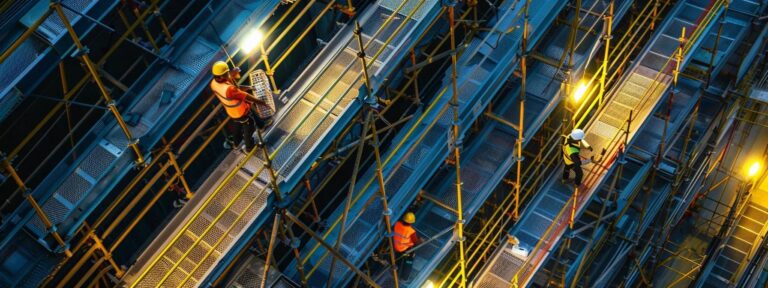Introduction – The Critical Link in Fall Safety
Roof work is inherently dangerous, but the most overlooked element of fall protection is often the tie-off point—the physical location where a worker connects their safety harness to an anchor system. Without a properly placed and certified roof tie-off point, fall arrest systems become ineffective.
In this guide, we’ll walk you through everything you need to know about selecting, using, and maintaining roof tie-off systems that meet OSHA and ANSI standards.
What is a Roof Tie-Off Point?
A roof tie-off point is a designated anchorage connection that allows workers to attach their lanyard or lifeline to a fixed or temporary structure. It acts as the foundation of a personal fall arrest system (PFAS).
Tie-off points can include:
- Fixed roof anchors
- Beam clamps
- Mobile weighted systems
- Horizontal lifelines
- Rooftop guardrail systems (when used as restraint)
OSHA Requirements for Tie-Off Points
Under OSHA 1926.502(d), a tie-off point must:
- Support at least 5,000 lbs per user
- Be installed under supervision of a qualified person
- Be part of a complete fall protection system
- Undergo routine inspection and re-certification
OSHA also warns against using non-certified points like vent pipes, railings, or HVAC equipment as makeshift tie-offs.
Types of Roof Tie-Off Systems
Permanent Tie-Off Points
Installed into the roof structure and designed for repeated use. Ideal for:
- Commercial buildings
- Hospitals
- Warehouses
- Multi-unit housing
Temporary Roof Tie-Off Systems
Used for single projects or short-term work. Clamped or weighted anchors require no penetration.
Tie-Off Point Placement Best Practices
Proper tie-off point placement is critical to safety and arresting distance. Follow these guidelines:
- Place anchors above the worker’s D-ring level
- Avoid swing fall zones (anchor should be overhead or in-line)
- Maintain a clear fall path—no obstructions below
- Keep lanyards as short as feasible to minimize free fall
Want a custom anchor layout? Visit our Fall Protection Anchorage Points guide.
Suitable Surfaces for Tie-Off Anchors
| Surface Type | Compatible Tie-Off System |
| Metal Roofs | Standing seam clamps, seam anchors |
| Asphalt Shingles | Bolt-in anchors with flashing |
| Concrete Deck | Wedge anchors, embedded rings |
| Membrane Roof | Non-penetrating counterweight systems |
Real Industry Use Cases
| Industry | Tie-Off Type | Use Case |
| Commercial Roofing | Permanent | Regular maintenance access |
| Telecom & Utilities | Temporary | Antenna servicing on towers |
| Solar Installation | Mobile tie-off anchors | Repetitive residential projects |
| General Contractors | Horizontal lifeline | Edge work on multi-floor sites |
Maintenance & Inspection
Tie-off points must be inspected:
- Before every use
- Annually by a certified inspector
- After any incident or fall
Look for signs of:
- Corrosion
- Loose hardware
- Deformation
- Label fading or missing
Common Tie-Off Mistakes to Avoid
- Connecting to untested fixtures
- Using horizontal lifelines incorrectly
- Placing anchor too low (increases fall distance)
- Mixing incompatible hardware (snap hook + small D-ring)
1-View compatible Roof Harness Anchors
2-Learn about Roof Fall Protection Anchors
FAQs – Roof Tie-Off Questions
Q1: Can I tie off to a ladder or pipe?
No. OSHA prohibits non-certified tie-off points unless verified by a qualified person.
Q2: How many tie-off points are needed?
Each worker must have their own certified anchor point unless rated for multiple users.
Q3: What if I can’t find a tie-off point?
Use a temporary mobile anchor system or horizontal lifeline with engineered controls.
Q4: Is a guardrail a tie-off point?
Only if it’s specifically rated and certified for fall arrest—not all guardrails qualify.



